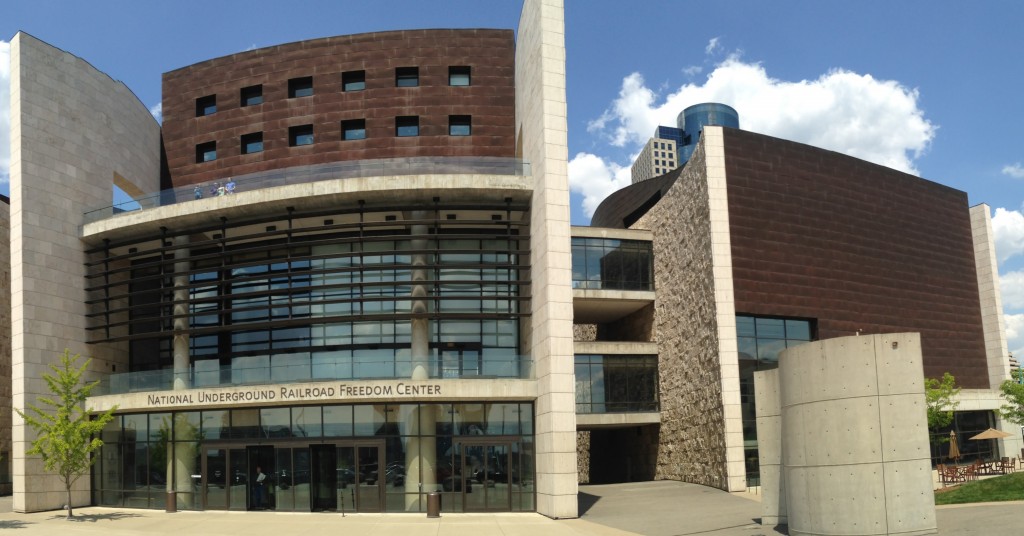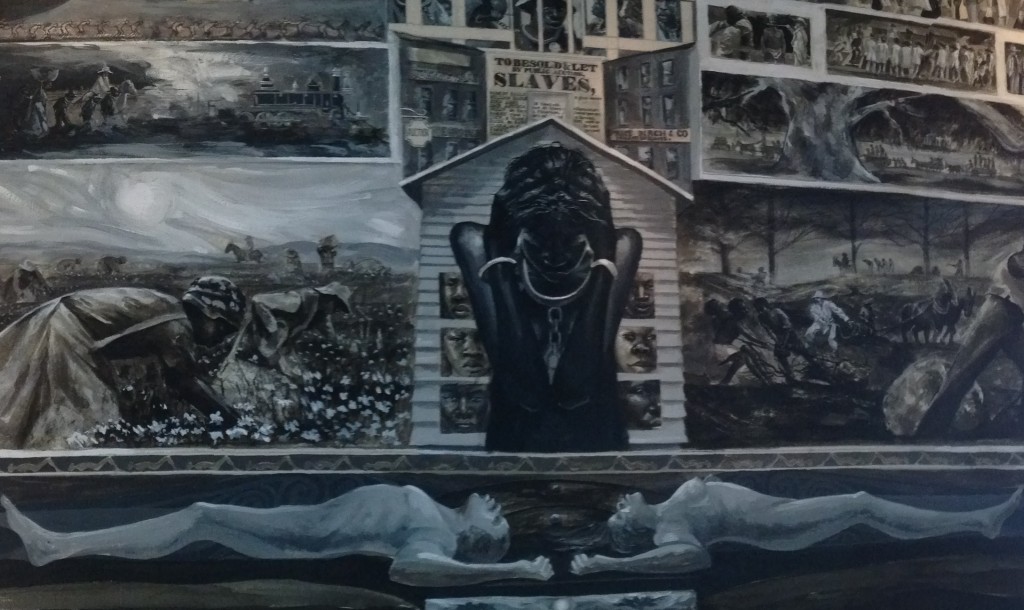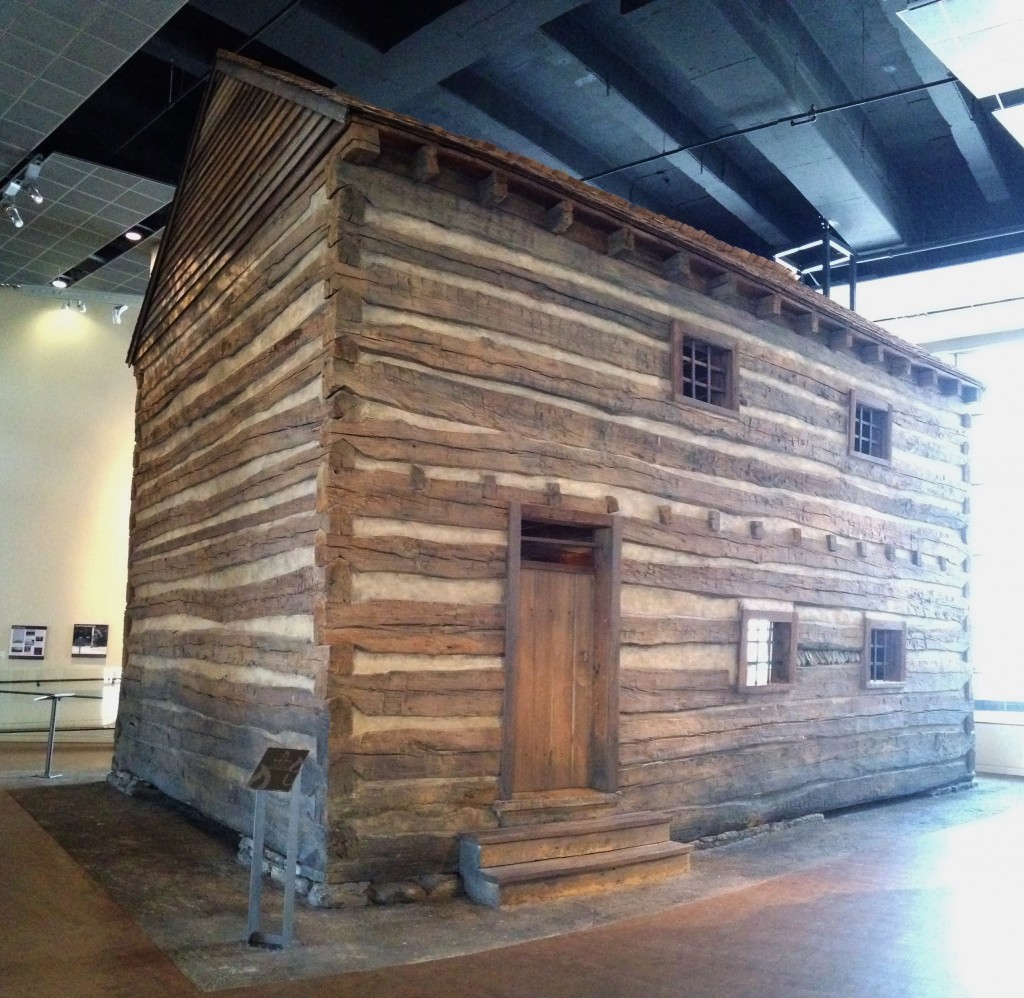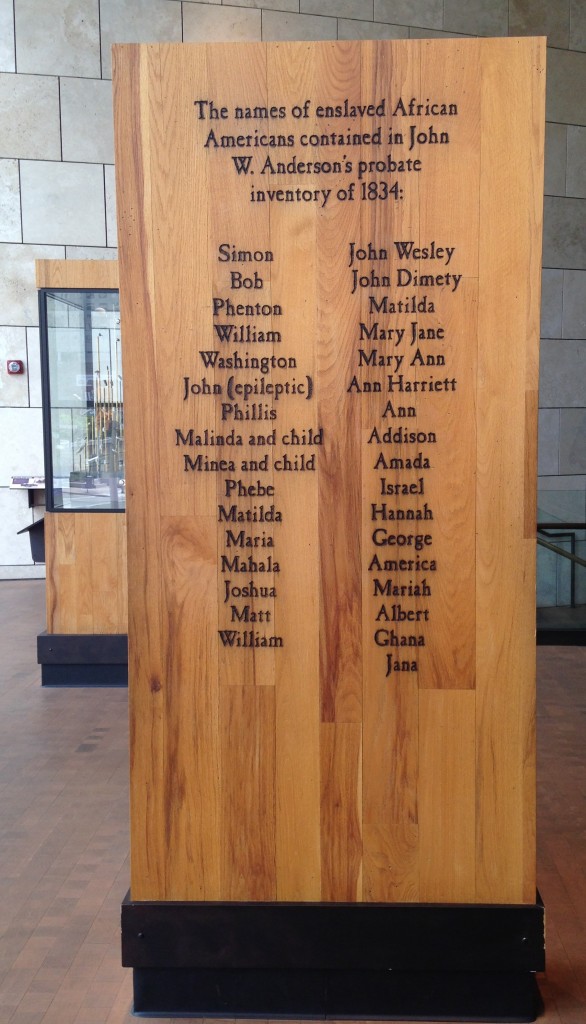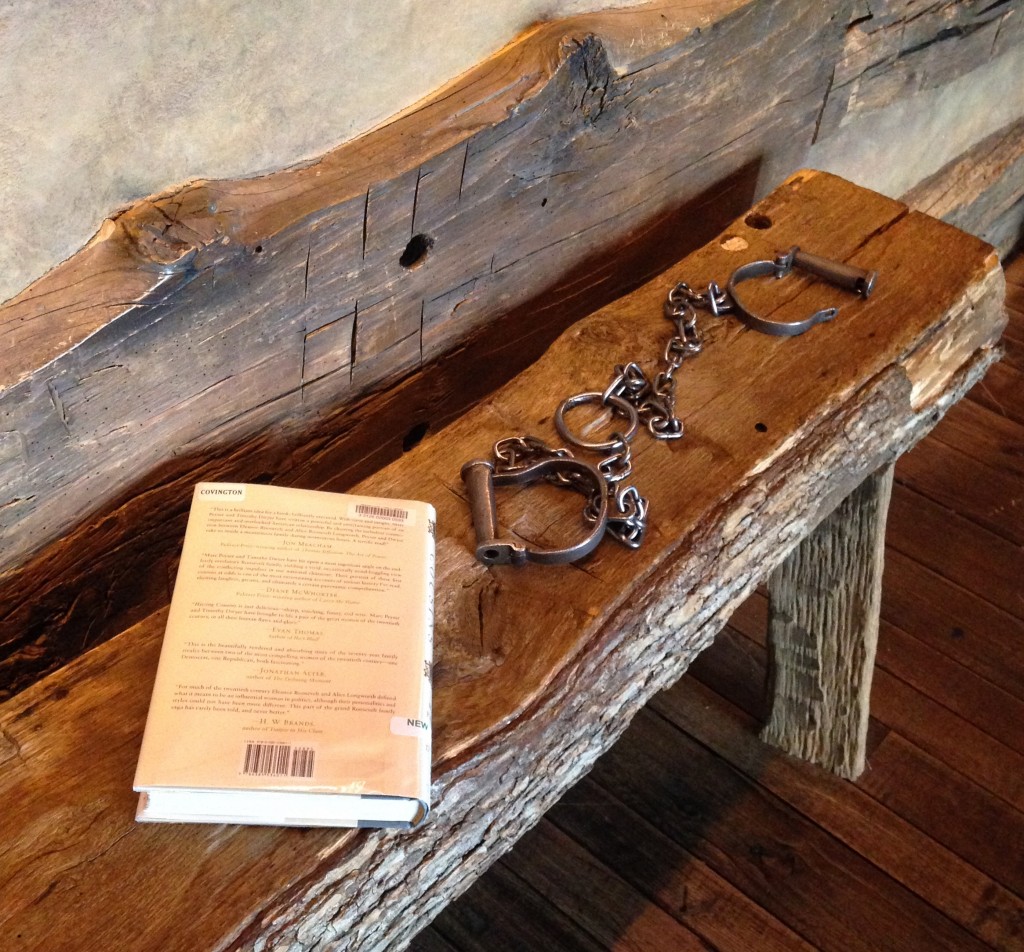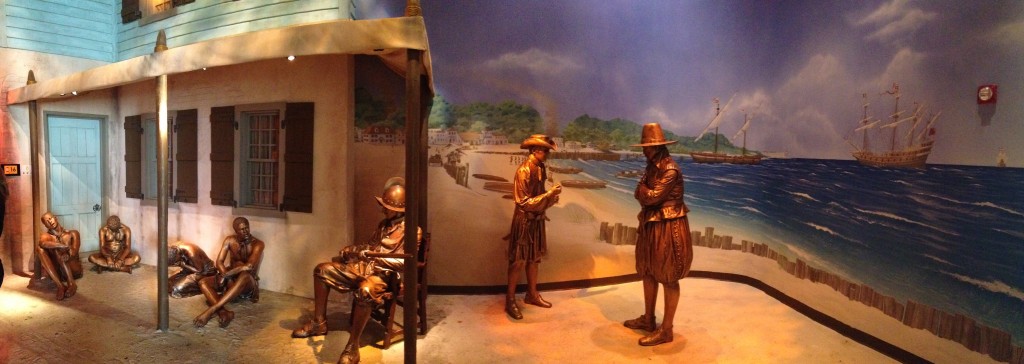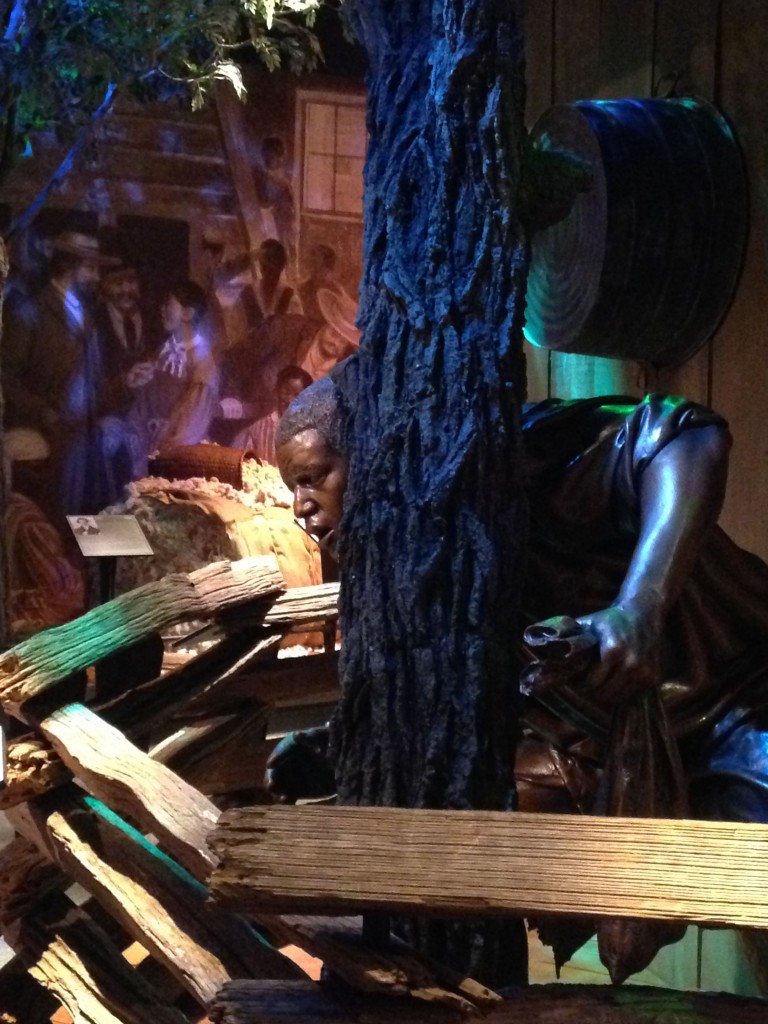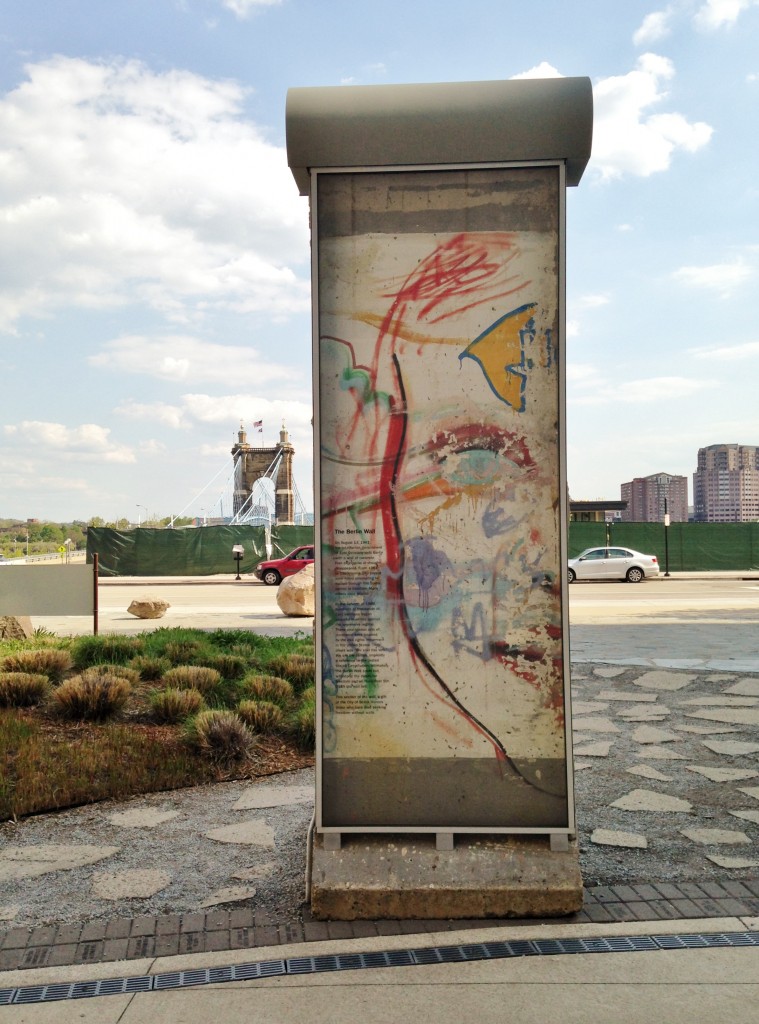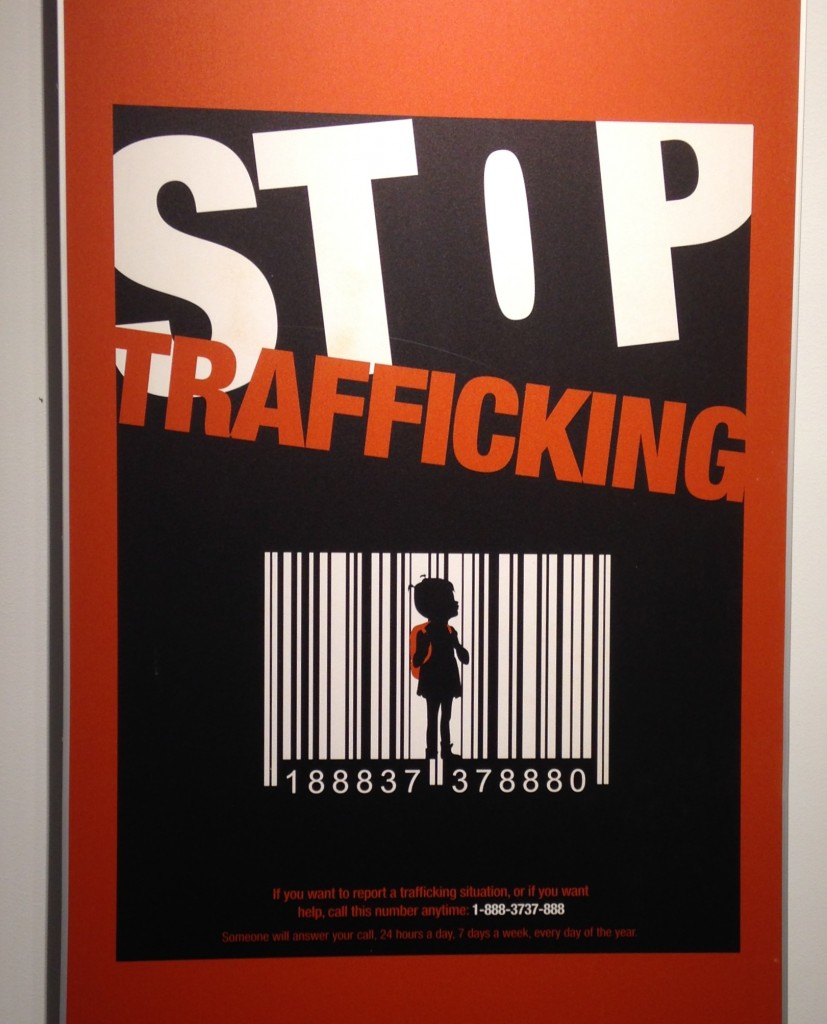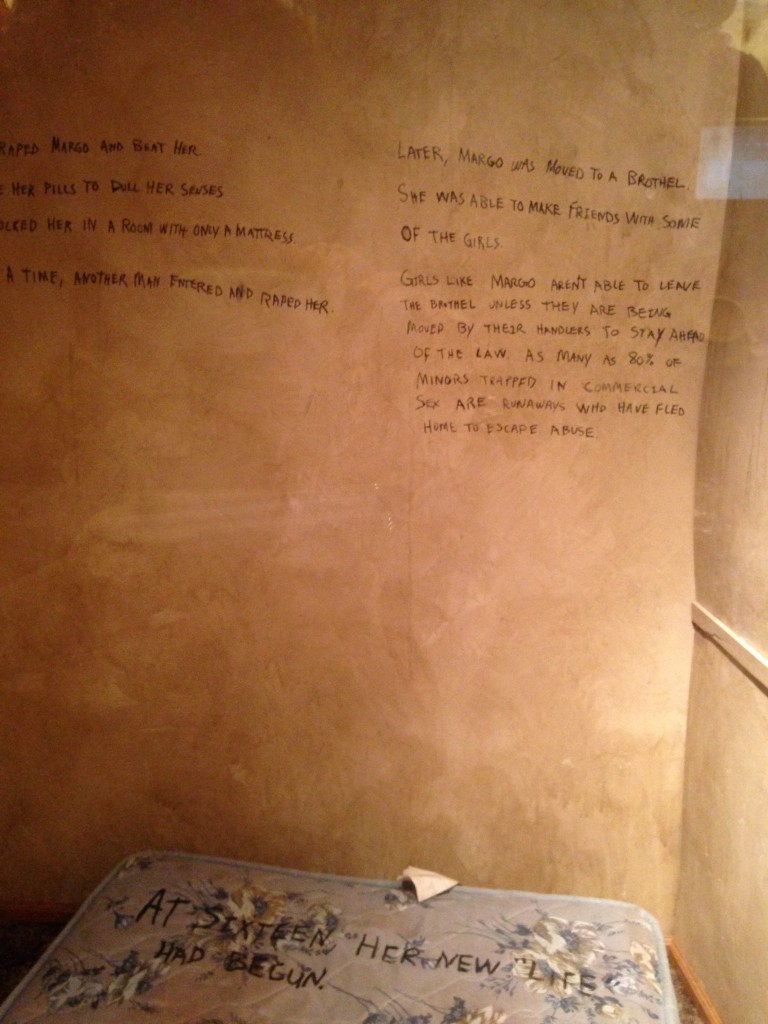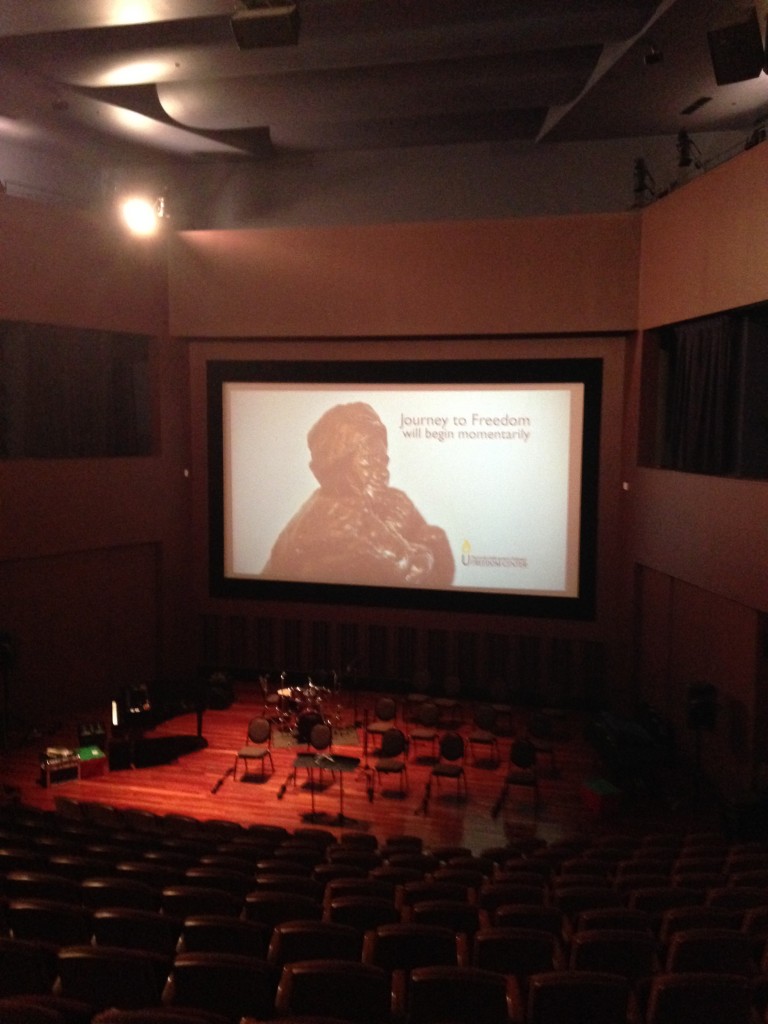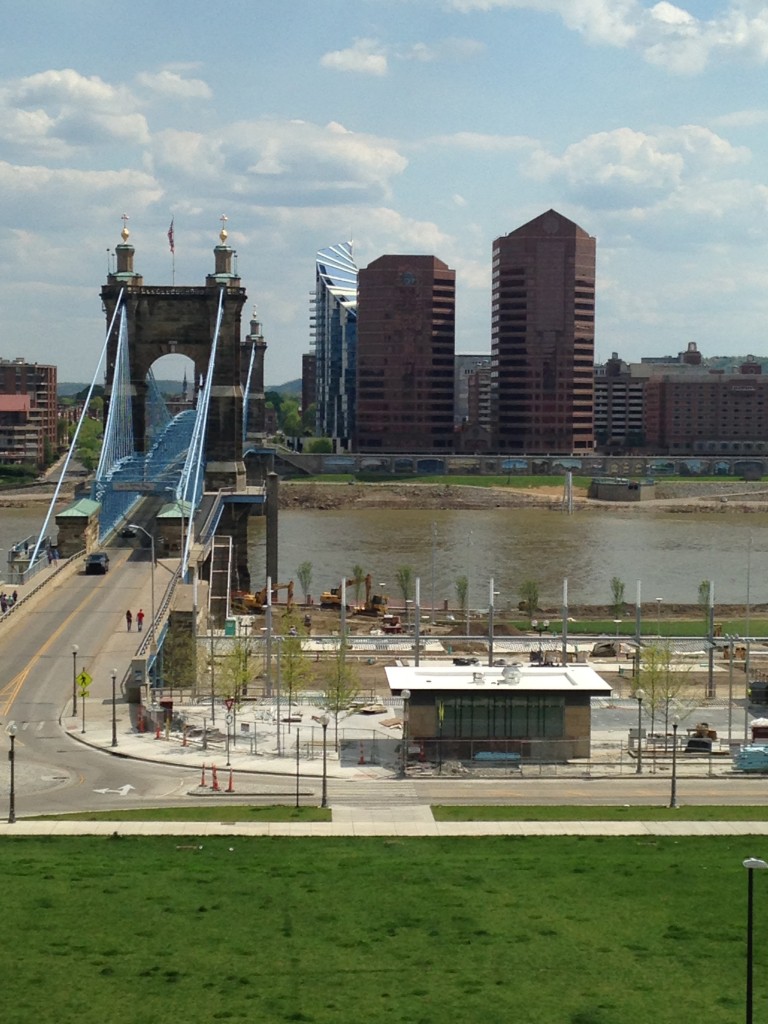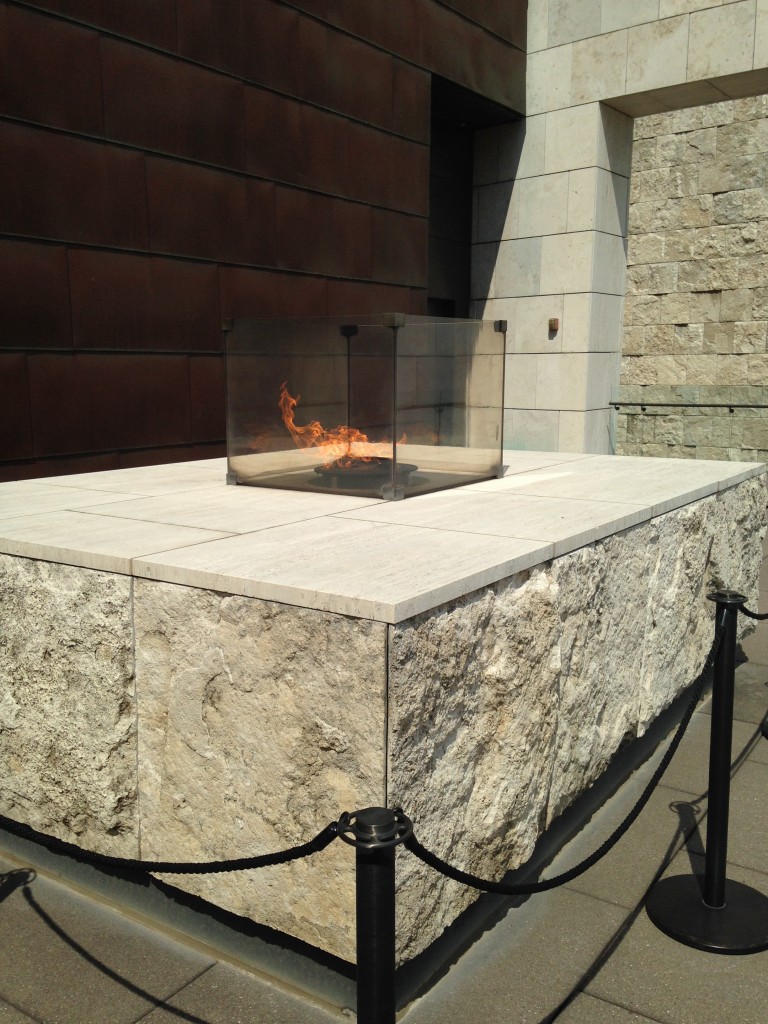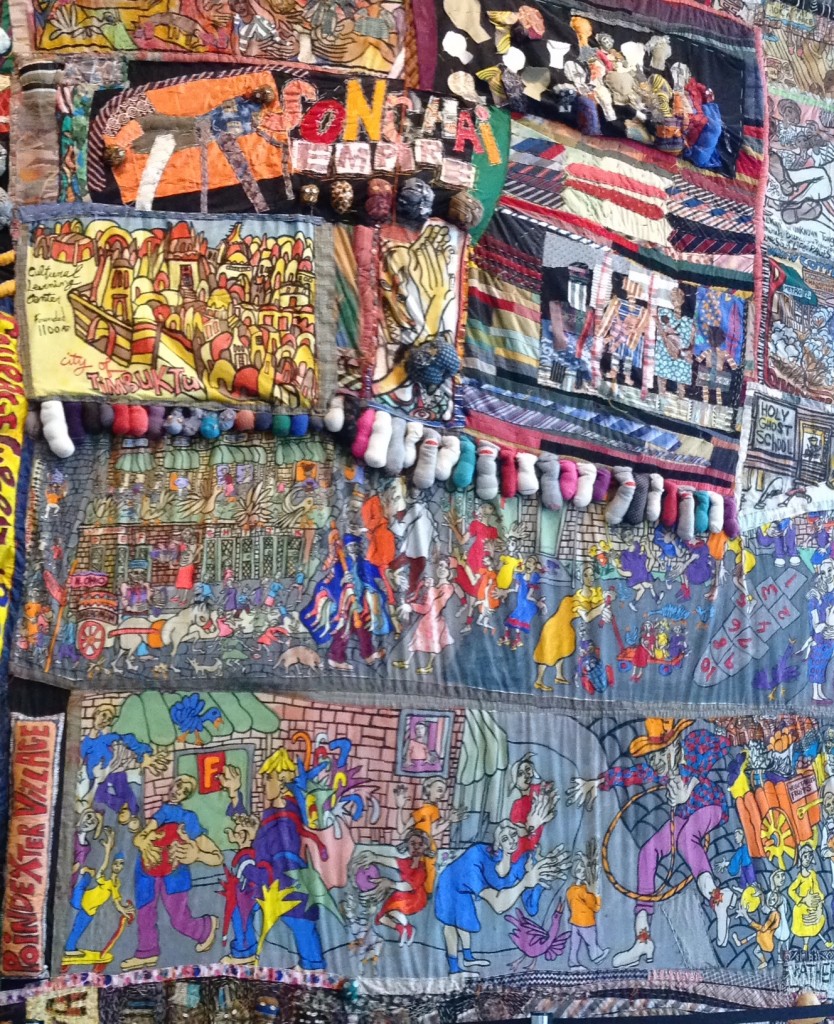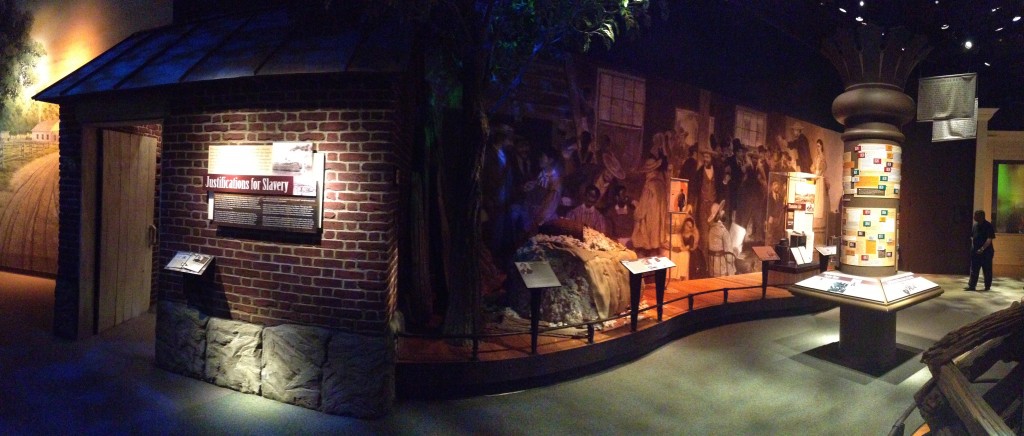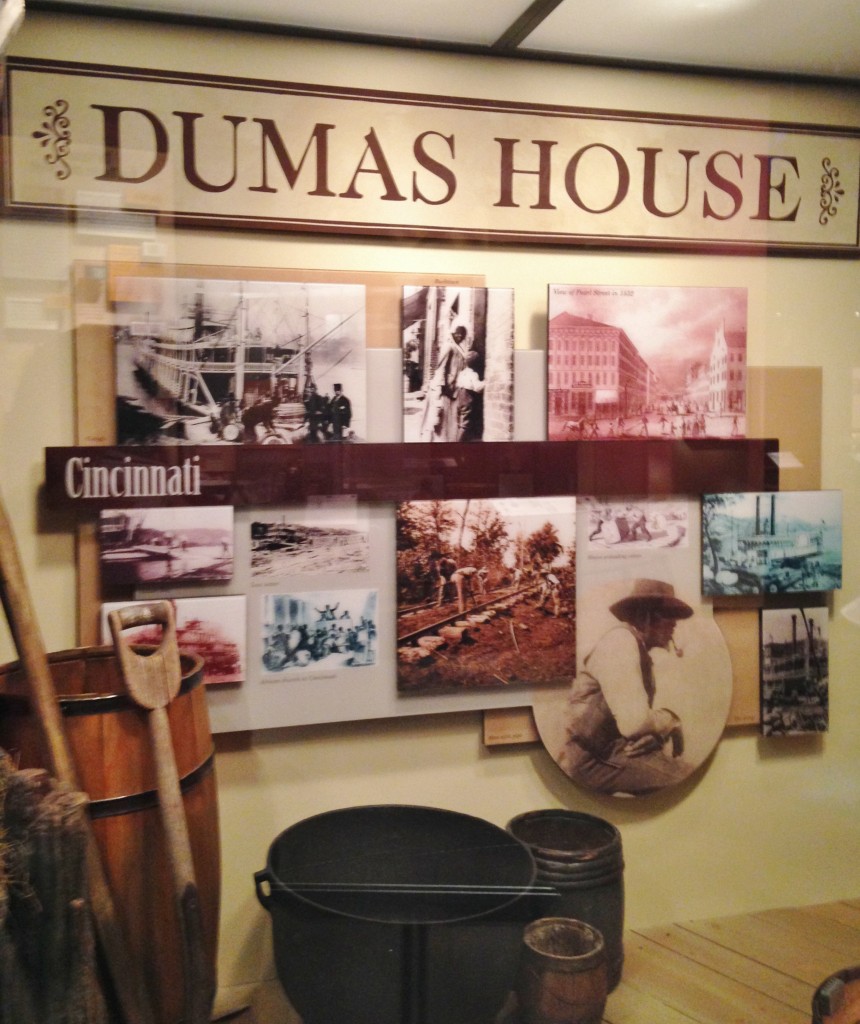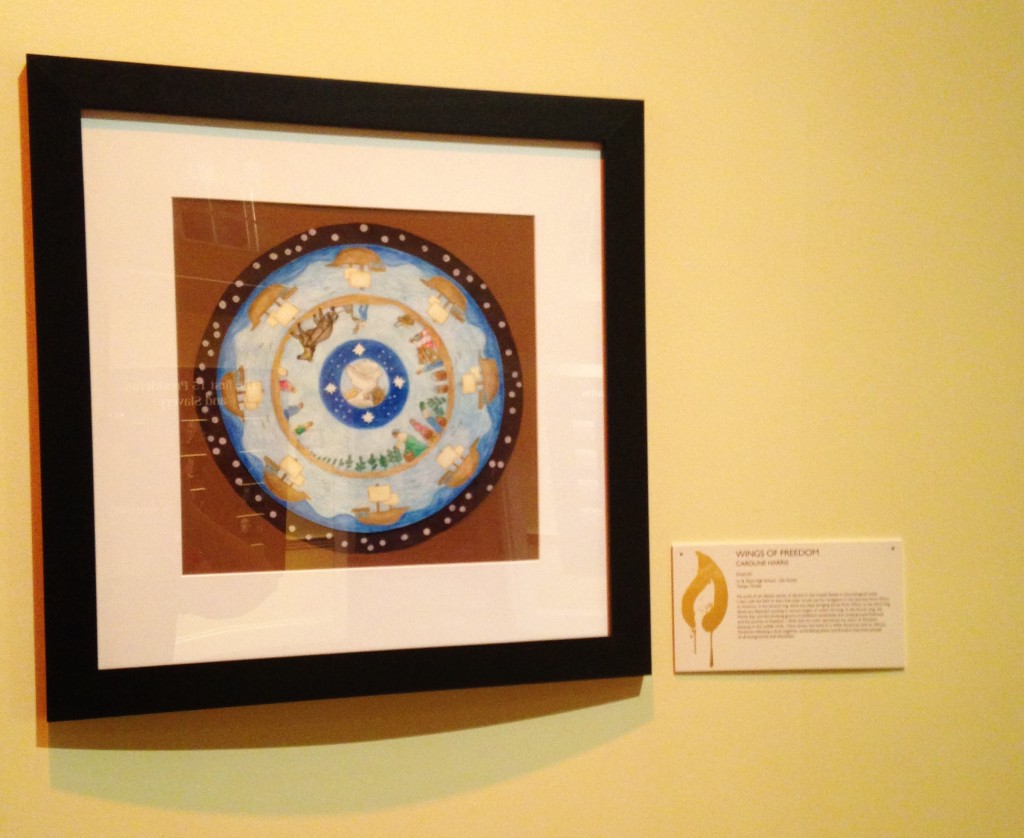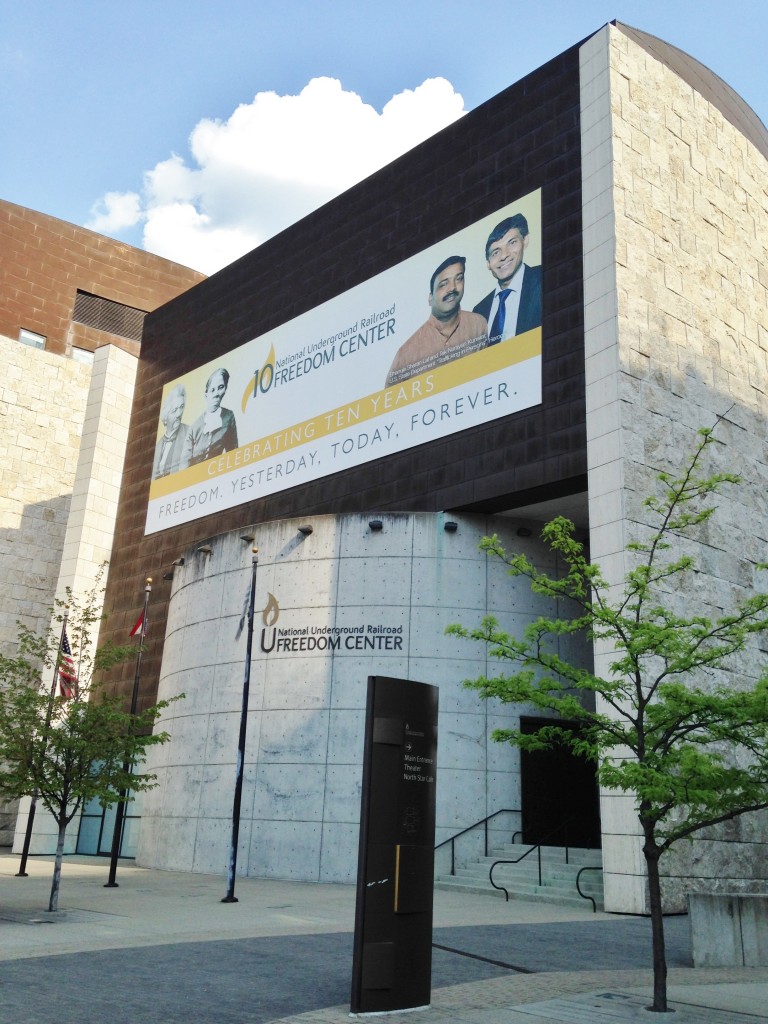Since the Ohio River played an important role in providing freedom to American slaves, it was no surprise that Cincinnati, Ohio would have been chosen as the location for the National Underground Railroad Freedom Center.
I visited the museum with the mindset that my experience would provide me with a historical perspective of pre-Civil War slavery, but I was more than surprised when I learned that the center also focused on modern day human trafficking. The interactive exhibits were educational and informative and I realized that I was not prepared for what I would experience here. This museum is so much more.
The National Underground Railroad Freedom Center presents detailed displays providing an account of slavery in the United States over the 18th and 19th centuries. Artifacts, photos, artwork and diaries bring to life the stories of some of the 100,000 slaves that were determined to flee captivity in search of freedom.
Walking through an original Slave Pen from Mason County, Kentucky was one of the most emotional experiences of my visit. I could not help but think of the many lives that passed through here, held against their will, sold for a sum that could never equal the price of a human life. It saddens me to think of the inhumane way that slaves were treated and that, just because of the color of one’s skin, that they should be regarded as anything less than human.
Placards show how the organization dismantled the two story log structure, transported it to the center and the carefully reconstructed the cabin on the second floor. Built in 1830, this twenty-one by thirty-foot structure was used to hold slaves until they were shipped to other locations for auction. I enjoyed a few moments with the museum’s docent who provided a description of the Slave Pen, explained the additional exhibits and answered the questions I had about the history of slavery.
On display are several artifacts and documents that have been well preserved and provide insight into the process of obtaining slaves in the United States. For example, a probate list of the “possessions of John W. Anderson” includes the details of his belongings to include a list of slaves that were in his possession. It is heartbreaking to realize that slaves were nothing more than property as if they were cattle or crops.
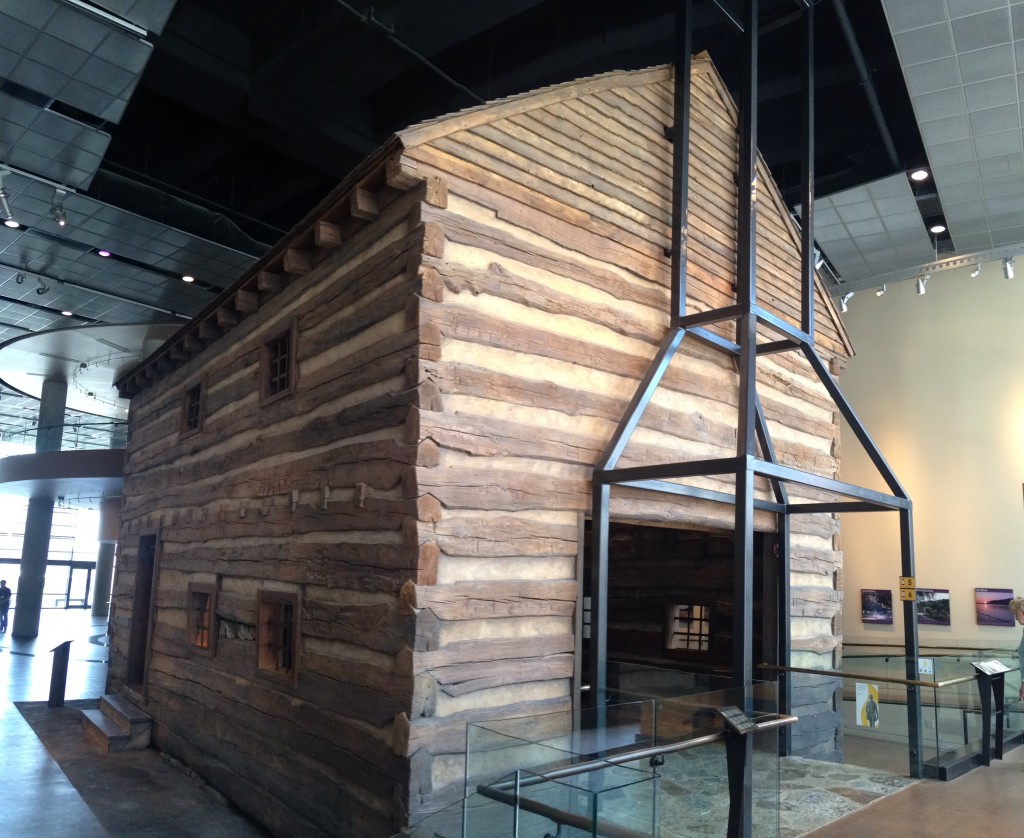
The length of time in which the slaves were kept in the cabin depended upon the slave trade market, lasting from days or even months. The Slave Pen’s construction is very simple with only eight small windows, a stone floor and a fireplace. The women lived on the first floor so that they could cook at the fireplace, while the men slept on the second floor. Stepping into the rustic structure is a sobering realization that slavery was once an accepted practice in the United States.
The men were chained to the structure to ensure that they would not escape. They were imprisoned, not because of any wrongdoing, but only because of the color of their skin. They were not free to come and go as they pleased and any attempt of escape was severely punished to include harsh beatings, dismemberment and even death.
The exhibit titled From Slavery to Freedom showcases the period of slavery in the Americas covering a period of three centuries. The museum’s thorough account of the how slavery began shows the early enslavement of Native Americans and European indentured servants. By the late 1800s, it was estimated that over 11 million Africans would survive the crossing of the Atlantic Ocean and would be sold into slavery to the Caribbean, North and South America.
The display concludes with the end of the Civil War resulting in Abraham Lincoln’s Emancipation Proclamation to abolish slavery. After three long years of bloodshed, the document declared “that all persons held as slaves within the rebellious states are henceforward shall be free.” At the time of the decree it was estimated that there were approximately 4 million slaves in the United States.
Although much emphasis within the museum has been given to the history of slavery in the United States, the National Underground Railroad Freedom Center also covers a wide range of events where Human Rights were compromised over the course of history. There is a piece of the Berlin Wall that once separated communist East Berlin and West Berlin restricting passage to each side of the city for over 28 years. November 9, 1989 marks the beginning of the Wall’s fall as East Germany opened the borders for passage.
Unfortunately, slavery continues throughout the world today with an estimated 27 million people enslaved, with 60,000 residing in the United States. With the Center’s primary objective to “abolish human enslavement and secure freedom for all people”, it is not surprising that a wing of the museum is dedicated to modern day slavery, which most of us know as human trafficking.
It is a despicable practice where people are living as forced laborers, child brides in arranged marriages and involved in the sex trade. It is a real problem, even in the United States that can no longer be ignored and denied.
The human trafficking section of the Center identifies the countries where the enslavement of people exists and what action is currently being taken by their government agencies and volunteers to end human slavery. Innocent lives are exploited each day for the sake of profit or the paying off of debts.
In addition to all of the exhibits, there are videos that literally bring the story of slavery to life. The Journey to Freedom video gives account of the lives of two former slaves, Solomon Northrup from America and a modern day slave from Cambodia, Vannak Prum. Both men were free until they were deceived into taking on employment that would result in their being sold into slavery, unbeknownst to them. The presentation documents their capture, the abuse that they would endure and the events that would lead to their release after suffering many years of captivity.
The documentary concludes by recognizing the many heroes that made it their mission to end slavery in both the 19th century and today. The most recent account is the 2012 recognition of 12 activists who were honored for both their work to end Human Trafficking and their passion for fighting for Human Rights.
The Center provides various “quiet places” in which to reflect on past and present violations of human rights throughout history and throughout the world. It can seem so overwhelming that slavery is, in fact, an epidemic that continues to this day and is on the rise.
From one of these vantage points, I was reminded that not long ago, just across the river, American slaves longed to cross this symbolic Jordan River in hopes of living the rest of their lives in the Promised Land of the free. This was not an easy passage and it is estimated that only about 100,000 people were successful in their fight for freedom. The National Underground Freedom Center is a reminder that even today, freedom is worth the fight.
Are you a freedom fighter and human rights activist? Have you had the opportunity to visit the National Underground Railroad Freedom Center? I would love to hear from you to learn more about your cause and/or organization if you would kindly leave your message in the comments section below. If the museum has moved you in any way, I would be excited to hear about your experience as well. Many thanks for taking the time to read about my experience at the National Underground Freedom Center and wishing you many Happy Travels!
What to See and What to Do:
The National Underground Freedom Center
50 East Freedom Way
Cincinnati, OH 45202
Telephone: 513 333 7500
- Admission Fee: $15 for Adults, $10.50 for children ages 3 – 12, Seniors 60+ for $13 and children 3 and under is free of charge.
- Hours: Open daily from 10 AM to 5 PM from Tuesday to Saturday and from Noon to 5 PM on Sunday and Monday; Tickets sold until 4PM.
- Amenities: Historic tours, Exhibits, Geneology, Group Tours, Rental Space, African American bookstore, Gift Shop, North Star Café, Special Exhibits
- Scenic View: The view of the Ohio River and Kentucky
- Length of Visit: 4 hours
- Travel Tip: Backpacks, large bags and umbrellas are not permitted in the museum.
Where to Stay:
Millennium Hotel Cincinnati
150 W. 5th Street
Cincinnati, OH 45202
Telephone: 513 352 2100
Where to Eat:
Moerlein Lager House
115 Joe Nuxhall Way
Cincinnati, OH 45202
Telephone: 513 421 2337
I was so happy to see the Caprese Flatbread on the menu and I ordered a couple of local beers. The restaurant was busy because the Cincinnati Reds were playing and the location is close to the stadium.
During a later date, I visited with a friend where we ordered a flight of beer and the Meat and Cheese board which was served with grilled beer bread, spicy mustard, applekraut and pickles. We selected two meats (prosciutto and candied pork belly) as well as two cheeses (Red Dragon mustard Welsh cheddar, which is a favorite of mine and the Cabot Hot Habanero Cheddar). Exceptional! Additional meat and cheese samples are available for $4 each.
What to Eat:
- Skyline Chili: My go-to meal at Skyline is the 4-way chili with onion served with oyster crackers and hot sauce. I always pick up two York peppermint patties after cashing out. Cincinnati chili is a beef based sauce served over spaghetti noodles and cheese. Additional toppings include onions and beans.
- LaRosa’s Pizza: A local chain pizzeria, this Sicilian style pie is made with a sweet crust and sauce. My favorite menu item is the Caprese pesto Flatbread Pizza.
- Graeter’s Ice Cream: It’s the French Pot process that makes Graeter’s Ice Cream so decadent and rich. Towards the end of the process, they pour chocolate into the mix creating large chunks of yummy goodness.
- Montgomery Inn BBQ: Visiting the original Montgomery Inn BBQ at the boathouse is a culinary and scenic experience. Their ribs are served with a sweet and tangy sauce that has since made them the “Ribs King” and a favorite among locals. Load up on their amazing BBQ flavored Saratoga chips,
- Glier’s Goetta: While it looks like a slab of corn beef hash, this breakfast staple is made of sausage and oats, cooked until crispy. Most breakfast restaurants carry it as a side, especially the local cafes and diners.
- BonBonerie: One of the most decadent pastry shops in Cincinnati, their rich confections are absolutely amazing.
Where to Drink:
Moerlein Lager House
115 Joe Nuxhall Way
Cincinnati, OH 45202
Telephone: 513 421 2337
Books to Read:
- Eligible: A Modern Retelling of Pride & Prejudice, by Curtis Sittenfeld
- Running, by J.T. Cooper
- Dead Witch Walking, by Kim Harrison
- Beloved, by Toni Morrison
- Double Dutch, by Sharon M. Draper
- Romiette and Julio, by Sharon M. Draper
Photo Guide for Cincinnati (as provided by Chris Thompson on FourSquare):
- The John A Roebling Suspension Bridge
- Pick a spot near the Covington pier and shoot north toward the Cincinnati skyline. Shoot at sunset and underexpose by a few stops to get the lights just right.
- The new lights on the bridge create excellent stars when you photograph them using a narrow aperture (~f/16 and above) on your camera. That means you’ll need a longer exposure (and thus a tripod).
- General James Taylor Park
- Shoot from the top of the flag pole mound to get more building reflections in your shot. Shoot at sunset or sunrise for great lighting.
- Cincinnati Museum Center at Union Terminal
- Arrive first thing in the morning when the sun is coming up
- The Fountain at Fountain Square
- For great photos of the fountain: set your camera on a tripod and use a long exposure (2-5 seconds) to capture the running water. Get Carew or the colored lights above Rock Bottom in the background.
- Fountain Square (look for reflections in puddles)
- Celestial Restaurant in Mount Adams – The restaurant is now closed, but you may still be able to use the parking lot.
- Carew Tower Observation Deck
- Provides some neat photos of the highways snaking around the city. Set your camera on a tripod and use a long exposure to get moving car trails. It’s only open at sunset a few days each year.
- Engine Company 46, 2733 Erie Avenue (at Michigan), Cincinnati
- One of the most beautiful historic firehouses in all of Cincinnati. The firefighters here are used to having their photo taken while they work. Ask nicely and you can get some cool shots.
- Cincinnati Observatory Center
- Krohn Conservatory
- Great American Ball Park
- Shoot the front of the stadium around sunset to get a nice color blue in the sky. Get one of the player statues in your shot for extra effect.
- Devou Park
- The overlook next to the Drees pavilion affords a great view of the Cincinnati skyline. Shoot at sunrise or sunset for the best lighting. Underexpose slightly to get the city lights just right.
- Newport Central Catholic for fireworks
- Shoot the Riverfest fireworks from this location. Bring a long lens and a tripod. You’ll want a long-ish exposure (5-10 seconds) to capture the bursts, but make sure the skyline isn’t overexposed.
- Riverfront Park
- The colorful fountains make a great subject, but you need to use a relatively fast shutter speed (>1/20 or so) to catch the lights before they change color, leaving your pic with plain white lights.
- American Sign Museum
- Be sure to bring a tripod to capture all the signs. Manual white balance is the way to go, because there are so many crazy colors of lights that your camera won’t know how to react.
Disclosure: Please refer to our blog disclaimer tab for more information.
